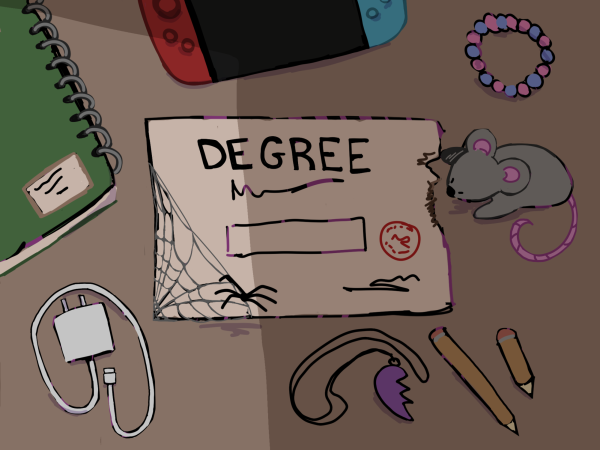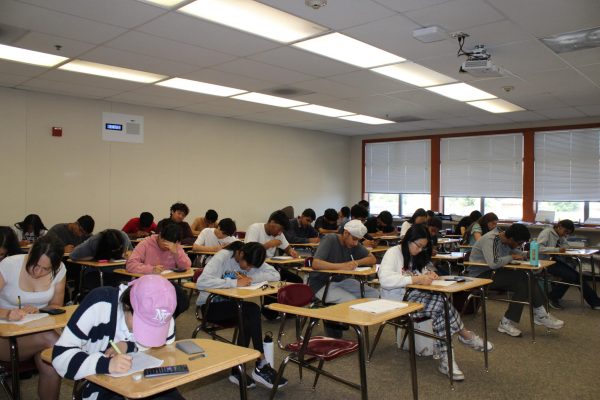PRO/CON: Is it worth returning to virtual learning?
CON — time might be a worse enemy for omicron than distance learning
The Californian file photo by Ben Olson
Senior Carter Honsinger enjoyed the freedoms of online school last year when Cal High had virtual learning from home.
With the recent rise in Omicron cases in Contra Costa County, many people may be quick to assume the best course of action would be to return to our state of quarantine and online school as we did throughout 2020 and some of 2021.
But according to new findings in science and simple matters of practicality, this option might just be a hasty cop-out to our current situation.
Schools have managed to maintain regular in-person schooling with mask mandates and general protocols, but many people have still been asking, “Why?”, especially if cases are more than triple what they have been in previous years.
There’s a lot more to take into account going into our third year with the pandemic. We’ve experienced every effect of the virus on our society first hand, and through this have learned how to handle it more effectively going forward.
First, we have to study the severity of the virus itself.
As vaccination rates increase in the US, especially among high-risk age groups, symptoms of the Omicron variant have become much less severe. Some may argue that the disease is much more contagious and can be spread to people who have been double vaccinated and boosted.
But the chances of the virus progressing into a more life-threatening infection such as pneumonia or leading to hospitalization are significantly slimmer for vaccinated individuals.
Even the CDC sees the new strain as less threatening as updated guidelines recommend only a five-day quarantine period. This isn’t very strict since it states on the CDC website that those who are unable to quarantine may go out as long as they wear a mask and social distance. During the 2020 shutdown, these rules were much more largely enforced and expected.
Testing for COVID in 2020 was much more difficult as well. Booking nearby testing sites and receiving results took much longer than it would today with new at-home testing kits available.
Almost anyone would be able to access affordable at-home testing kits that produce pretty accurate results in just minutes. This makes it a lot easier to know if you or anyone you know is safe to be around. Since now most everyone is well-informed on the symptoms and circumstances of COVID, it would be rare for the disease to go unnoticed.
Perhaps the most practical grounds that make it unreasonable to shut schools is simply the time and work it would take. There is a lot opf energy being put toward keeping schools open and a lot of it would be wasted if we went back online.
Students, teachers and administrators have already had to transition from in-person school to online to in-person again once and it would be a lot to ask to go through it another time.
Figuring out scheduling, ensuring all students have the technology and Wi-Fi required for their classes, grading systems and more would all have to be redesigned once again to align with today’s schooling.
Teachers’ curriculums, sports schedules and any other plans that may have existed prior would all have to be canceled or postponed.
Learning through an online school isn’t ideal either. Many students have a difficult time concentrating in their own homes and it opens the door to cheating on assignments and exams again. Students’ mental health were also deeply affected while being in quarantine as they were restricted from socializing with friends.
If Omicron is so contagious and many students have already contracted it over winter break and the first few weeks of school, only to recover in about a week, we can expect herd immunity will increase and the possibility of the illness continuing to grow isn’t likely.
If shutting down and reverting to online school was the better option we have to ask ourselves, “Why hasn’t it already been done?”.
A good-sounding solution isn’t always the most practical one.
Opinion columns reflect the view of the staff writer.

Senior Saachi Sharma is the editor of the premiering Podcast section this year. This is her third year in Newspaper and she is very excited to transition...


